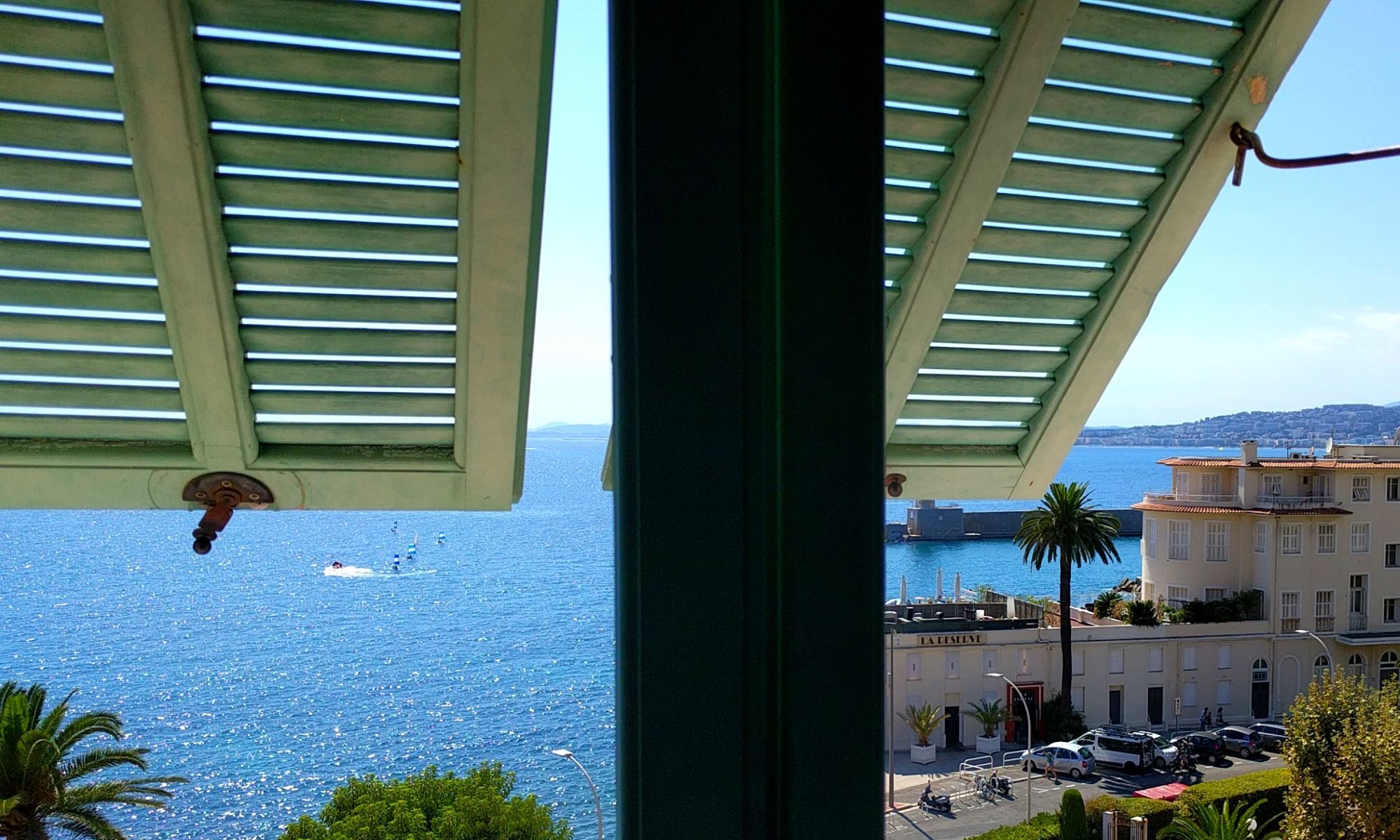John Delaney’s publications include Waypoints (2017), a collection of place poems, Twenty Questions (2019), a chapbook, Delicate Arch (2022), poems and photographs of national parks and monuments, and Galápagos (2023), a collaborative chapbook of his son Andrew’s photographs and his poems. Nile, a chapbook of poems and photographs about Egypt, appeared in May 2024. He lives in Port Townsend, WA.
Please visit John Delaney’s website: https://www.johnmdelaney.com/
Only a resident would know the way
through the narrow, winding, walled medina.
That would keep strangers and the riff-raff out.
But not the cats, those navigating souls
that follow their own track. They have the knack.
We took the dare and explored on our own.
We found stalls and shops and residences,
some alleys as dark and quiet as caves.
From a rooftop restaurant, we observed
(and heard) a tradesman crafting copper pots
in a small square filled with foreign tourists.
If being lost means everything is strange
and new, we were lost. When a gate appeared,
we emerged into city streets and traffic.
We hadn’t been bidden, but went back in.
In Morocco, a medina is the original, old, walled part of the city, usually car-less because of the narrow alleyways.
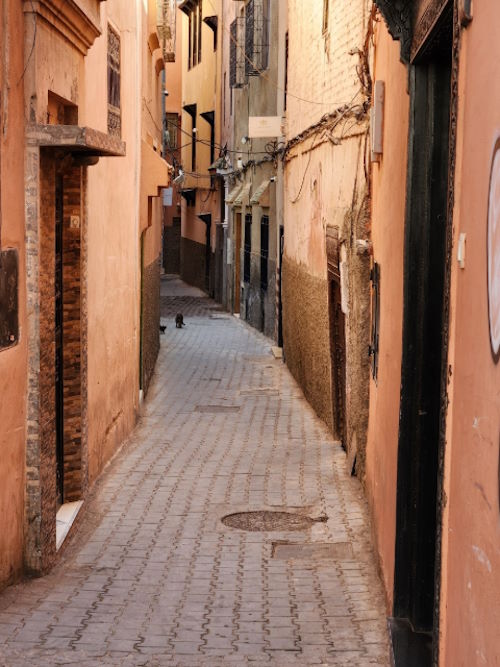
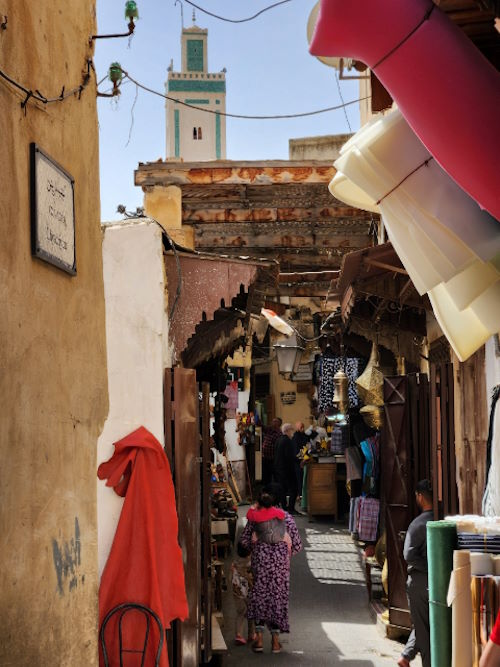
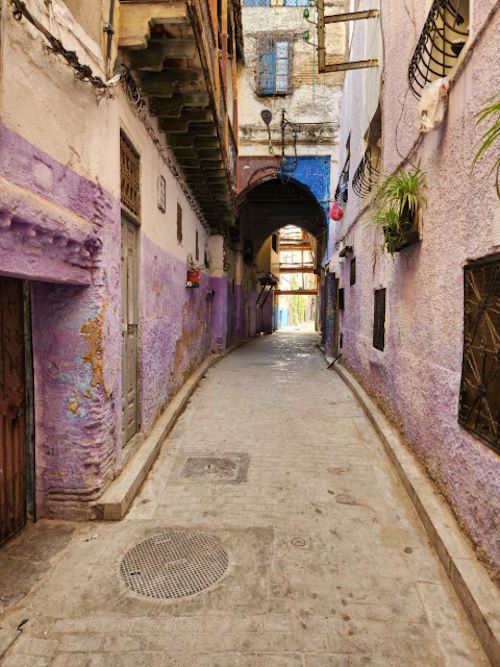
Hassan II Mosque, Casablanca
Here is a place large enough to hold
the prayers of 25,000 Muslims.
It overhangs the water which, the Quran says,
bears god’s throne. His waves roll underneath
in a ceaseless cleansing ritual.
Here is a place 6000 artisans wrought
from fragrant cedar wood and pink granite.
Intricate marble flooring and inlay,
gilded ceilings and exquisite zellige
(geometric mosaic tilework) abound.
Here is a place ordained by a king.
Its gates formed from brass and titanium.
Its ablution stations in the basement,
carved from local marble, ease water
through their lotus-shaped designs.
Here is a place that lasers on Mecca
from a sixty-story minaret.
Its retractable roof invites sunlight
and starlight to highlight the worshippers.
It’s the stronghold of a country’s faith.
Hassan II Mosque in Casablanca is the largest functioning mosque in Africa and the seventh largest in the world. It is the most ambitious structure ever built in Morocco and can house 25,000 worshippers inside and 80,000 more in its courtyards.
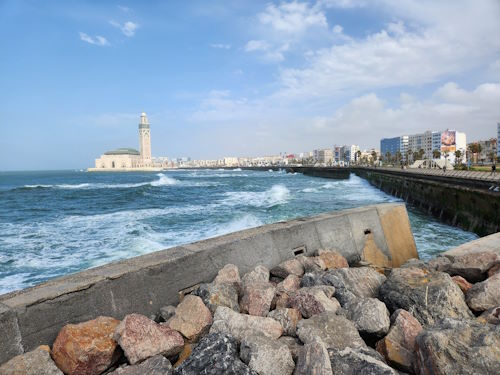
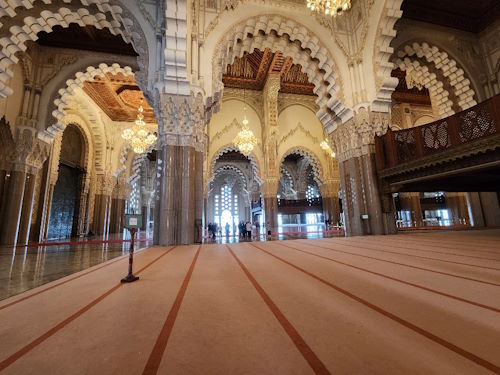
Souks
The stalls are approachable.
The goods are promotional.
The customers are sociable.
Venders are knowledgeable.
So, every day’s remarkable,
For everything’s negotiable.
Souks are traditional marketplace districts found throughout Morocco consisting of stalls offering a wide array of goods, from exquisite woodwork and lighting fixtures to basic food, spices, and even herbal remedies.
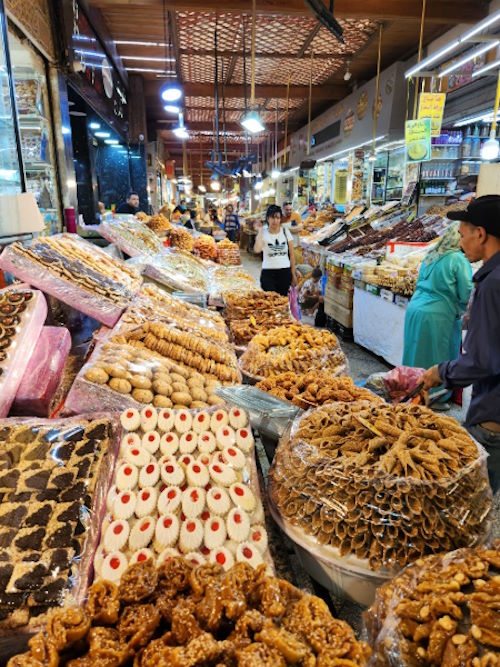
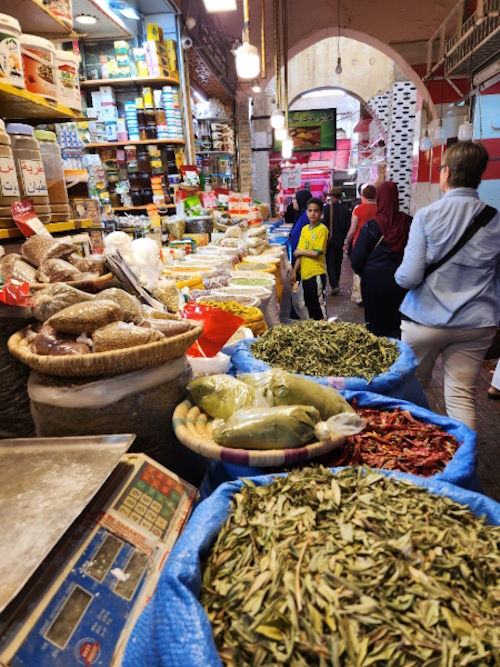
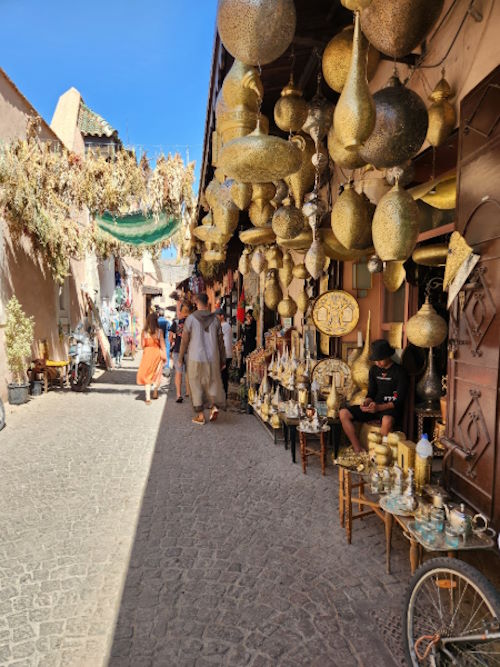
Riads
Down a nondescript passageway in the medina,
literally off the beaten track,
an ornamental wooden door beckons
and calls you back.
Inside—surprise—a hidden palace of rooms
surrounding an open-air courtyard and fountain
where tranquility perfumes and blooms.
Exquisite mosaics and woodwork
decorate the floors and ceilings,
plush fabrics and furnishings the space.
A reprieve from the marketplace
of rhythmic ruckus and sensuous sights.
You can sit here sheltered in your own thoughts.
Call it home for a few nights.
A Riad is a traditional Moroccan house or palace with an indoor garden and courtyard located within the old city. Once the residences of wealthy citizens, they are now boutique hotels.
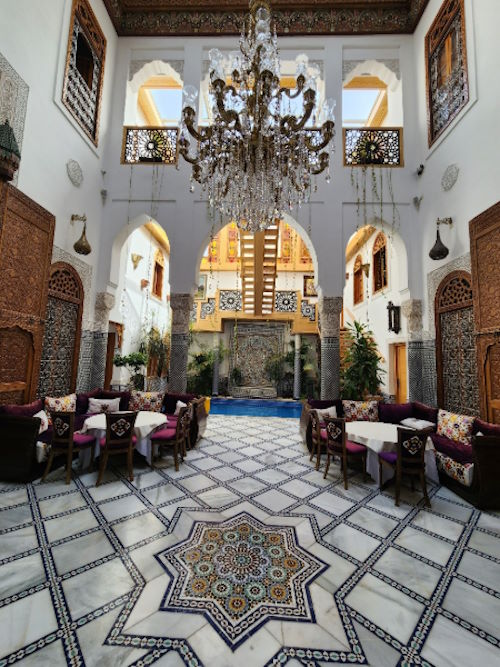
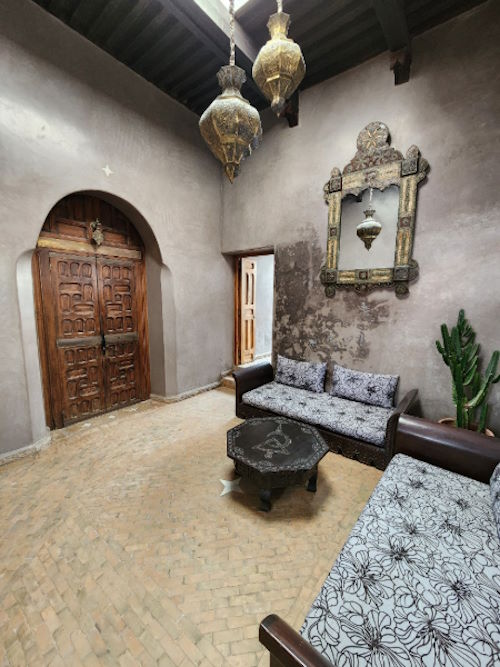
Roaming Around Rabat
A city of white in the brilliant sun,
oceanside, along the Bou Regreg River.
We taxied in from the airport, driving past
the curving Grand Theatre, like a swirl
of calligraphy, and the gherkin-shaped
business tower, named after the king.
Our riad hid deep in the medina,
so we followed a guide with our bags
and later learned to navigate the maze
to new surprises round every corner.
Shops and souks and uniformed children.
A box of kittens with a bowl of water.
Walled Chellah’s ancient Roman ruins
now house storks and cats, but at Bab Zadr,
the main gate, a snazzily-dressed musician
drummed away the time to entertain us.
We had lunch along the river and watched
a woman in hijab feeding pigeons.
We caught the changing of the horse guard
at Hassan Tower and mausoleum.
And through the Kasbah of the Oudyas,
a citadel of cafes and garden grounds,
one of our afternoons sauntered and strolled.
Somehow we stumbled on embassy row.
Artifacts of the country’s history,
bronzes and sculptures in the main museum,
vouched for the march of civilization.
It never seemed to stop, the work I mean
of the ubiquitous brush-broom sweepers,
at the king’s request, keeping the streets clean.
Rabat is the capital of Morocco, known as the Royal City since it is the seat of the Royal family—also the Washington of North Africa for its parks, boulevards, embassies, and government buildings. [Street sweeper photograph taken by Susan Delaney.]
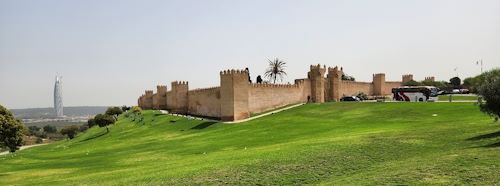
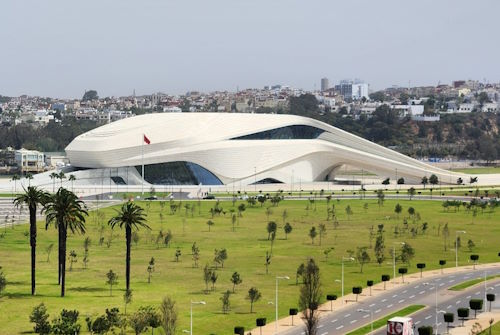
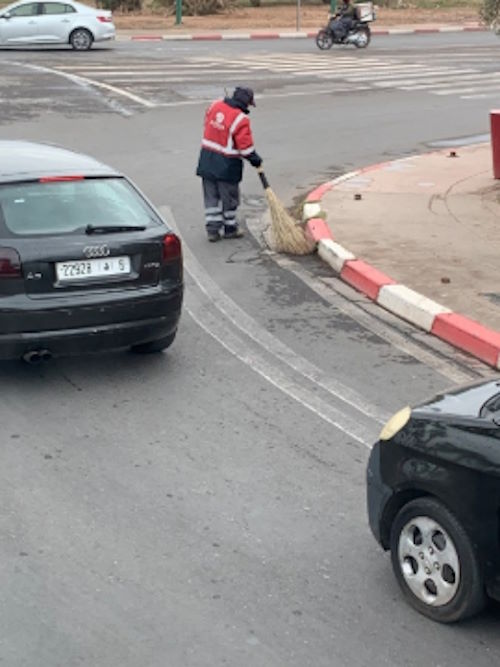
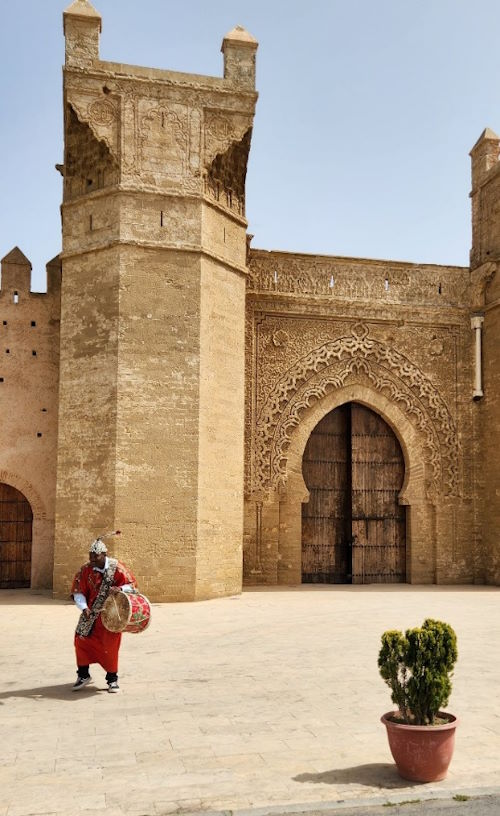
For other contributions by John Delaney, please follow the link below:
Poetry & Images in this post: © John Delaney
Published with the permission of John Delaney
